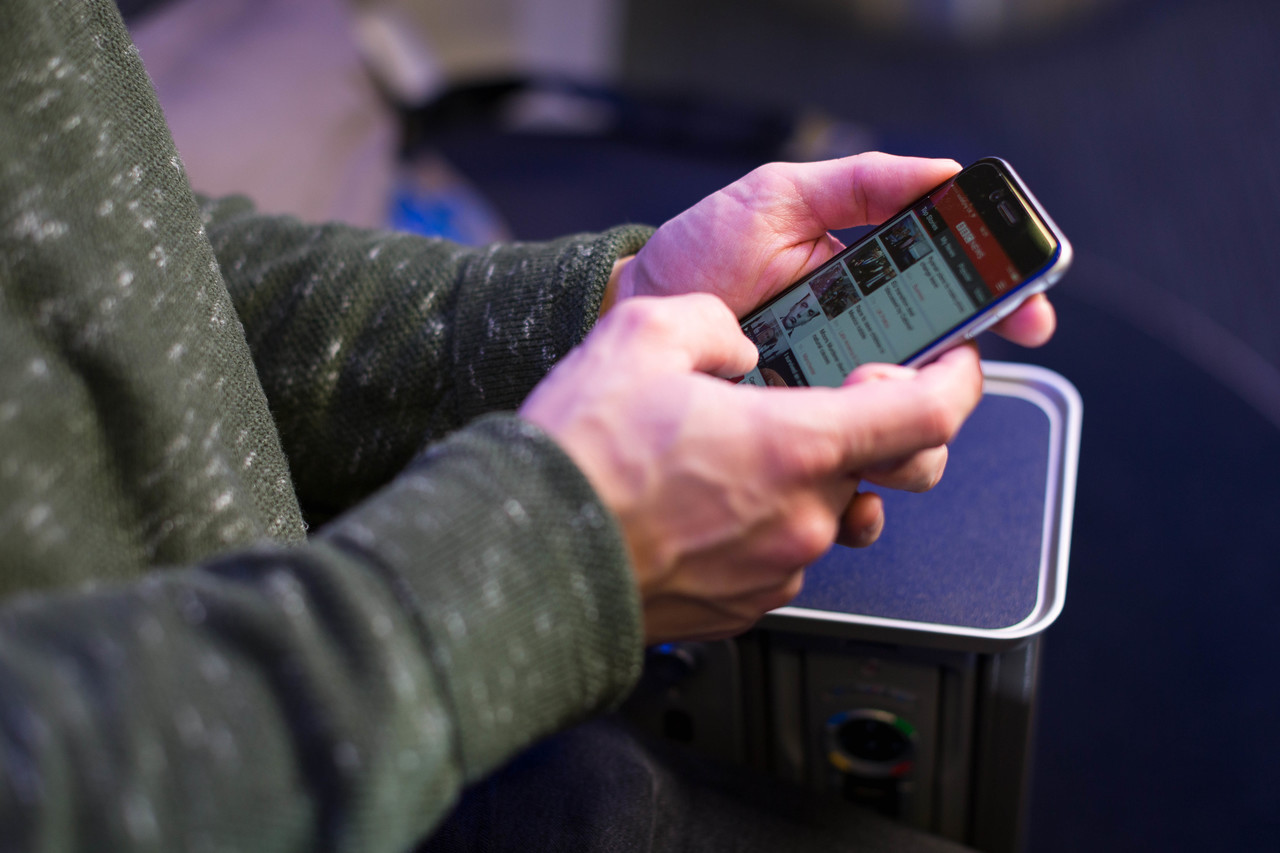
In today’s ultra-connected world it seems almost unfathomable that we might go without access to our phones for even just one hour – let alone the length of a long haul flight. But up until recently, the one place you could guarantee a digital detox was on a flight. Even an epic 18-hour marathon like United’s recently launched service between Los Angeles and Singapore.
Luckily, United is using aeroplanes which have wifi installed on this new route- and according to a new survey, that’s a service that passengers just can’t seem to live without anymore.
Gone are the days when business and leisure travellers alike could look forward to a flight for the sheer pleasure of being incommunicado. What better reason to put away the laptop, forget the project deadlines or worries at home – a flight was the perfect reason to binge watch movies, flick through glossy magazines and immerse yourself in a good book.
Yet according to a new survey by global insurers Allianz, the vast majority of Americans (around 76%) would use wifi on a plane – although, only if it were provided for free. A further 44% would even use old-school SMS text messaging if airlines gave free access.
40% of Americans don’t switch their phones to ‘flight safe’ mode
What’s slightly more worrying, 40% of the over 1,500 respondents who took part in the survey said they don’t always bother to switch their phones to ‘flight safe’ mode – despite the repeated warnings from airlines about the dangers of using phones and other ‘portable electrical devices’ in-flight.
In fact, nearly a quarter of passengers admitted to sending a text message or even making a phone call during a flight when it wasn’t expressly allowed by the airline.
The results probably aren’t that surprising – but airlines have been slow to respond to our desire to stay connected. The biggest problem is the cost of installing the expensive wifi and cellular equipment on a passenger plane – and then keeping the systems updated as technology quickly progresses.
Broadband quality connections are finally becoming a reality
Many airlines who were early adopters of in-flight wifi offer sluggish connection speeds. That’s made even worse on inter-continental routes where the internet connection is dependent on a satellite link.
Luckily, both the technology and the airlines are starting to catch up with our expectations. Just today, Hong Kong’s Cathay Pacific signed a deal with Gogo to install 2ku next-generation in-flight broadband wifi on their entire fleet of Airbus A330 and Boeing 777 aircraft.
Gogo says the 2ku system “delivers an internet experience comparable to what passengers have on the ground,” – although that can still vary wildly on geographic location and weather conditions.
Delta now offers free in-flight wifi for messaging
But the ability for passengers to access free in-flight wifi is still a long way off on many airlines. The high access cost can be prohibitive for many passengers. Although even that hurdle is being addressed on some carriers. At the end of September, Delta announced plans to at least offer free messaging services like Whatsapp via in-flight wifi.
“We know many of Delta’s customers want or need to stay connected in the air and on the ground, which is why we’re investing in an easy, free way to send and receive messages inflight through some of the most popular global platforms,” said Delta’s Tim Mapes.
Ove 38% of respondents in the Allianz survey said they simply wanted free wifi to stay connected with their friends and family. Nearly the same number (35%) felt it would be useful should there be an emergency and only 11% felt free wifi was needed to get work done.
Americans are concerned in-flight wifi could pose a terrorism risk
But while passengers want to take advantage of free in-flight wifi and phone calls, they’re not quite so keen on their seatmates using the service. Nearly 30% of those polled said other passengers using wifi to send messages put them off the idea of airlines introducing such a service.
Increased noise levels were also a concern – some 30% of respondents were concerned about the behaviour of other passengers having loud phone conversations at 39,000 feet. Nearly 20% of Americans were even worried free in-flight wifi posed a terrorism risk.
“Despite talk of the need to unplug and a desire to digital detox, we’ve found that many Americans do want to be connected while in flight,” explained Allianz’s Daniel Durazo.
Airlines could charge for wifi free ‘quiet cabins’
“Airlines have recognized this and are beginning to cater to this customer desire by offering free in-flight text messaging and Wi-Fi, and we anticipate they will continue to do so as technologies advance.”
Durazo thinks this might be an opportunity for airlines to nickel and dime us yet again – offering quiet cabins for the near 50% of Americans who would consider the idea should in-flight phone calls become commonplace.
Mateusz Maszczynski honed his skills as an international flight attendant at the most prominent airline in the Middle East and has been flying ever since... most recently for a well known European airline. Matt is passionate about the aviation industry and has become an expert in passenger experience and human-centric stories. Always keeping an ear close to the ground, Matt's industry insights, analysis and news coverage is frequently relied upon by some of the biggest names in journalism.







